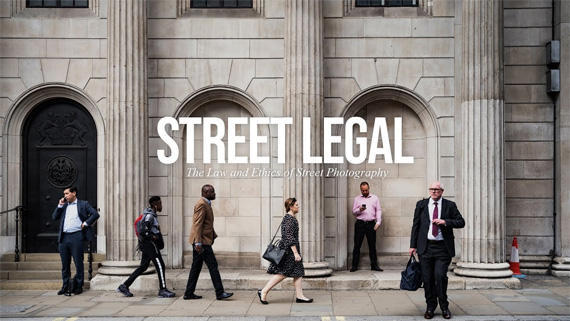Street photography can get really confusing as far as ethics and legalities are concerned. There are a lot of questions that can come up. Is it right to take photos of anyone in a public space? Do you need release papers to publish photos? How right or wrong is it to post photos that have people who can be recognized? To answer some of these questions surrounding street photography, Sean Tucker talks to a member of the legal team at Association of Photograhers (AOP):
What Can Be Photographed in a Public Space?
“If you’re in a public space, you can photograph anything.”
Law does not prevent you from photographing anybody or anything in a public space. More essentially, what you do with the image that you have taken is what matters more. However, what you may think is a public space may not actually be a public space. Be sure to check if it belongs to any business or individual because if the answer is yes, they can ask you not to photograph.
How and Where Can Street Images Be Used?
Street photos can be used for commercial purposes i.e. you can use it for promotion of a product, service, or a brand. Extending this logic, you can also use it to promote yourself, your business and services. Generally speaking, the following usage of street photos are okay:
- display in an exhibition
- selling prints from an exhibition
- selling a self-published copy of a book from an exhibition
However, if you’re getting other people to publish the book for you, then you’ll need to think more carefully about that.
What is GDPR?
GDPR stands for General Data Protection Regulation and it’s concerned with the protection of privacy for the citizens of the EU and EEA. GDPR doesn’t affect your ability to take photographs of other people. Considering the norms of the GDPR, an individual’s image remains anonymous as long as it’s not accompanied by any other additional data or information that makes the person recognizable. A person’s image thus can’t be considered as personal data. Furthermore, GDPR allows you to use a person’s image for artistic and/or journalistic use.
Model Release and Its Need
Model release is essentially a written permission from the subject of a photograph allowing you to publish the photograph commercially. If you are looking to sell an image for the promotion of a particular brand or service, you’d want to go with a proper contractual model release. With this, you’d be “paying” the subject either in monetary form or any other form of payment. This also overrides the GDPR.
The consensus form on the other hand is on the softer side. The subject can revoke their consent citing GDPR and this can cause issues in the long run.
What To Do If You’re Confronted?
Chances are that if people don’t like you taking a picture of them, they might confront you. They will definitely not be in a good mood while doing so. It’s up to you to make sure that you remain calm and behave. Confrontation usually happens because people get worried about where and how the image will end up. Therefore, clearly explain your motive for taking their photograph. It might be for a personal project, for the love of photography, or your hobby.
Ethics in Street Photography
When it comes to ethics, it is quite subjective and so the boundaries change from person to person. It’s quite important that you set up your own set of principles and abide by it. For instance, Tucker shares his ethical boundaries on street photography. You might want to consider adapting a similar kind of code of conduct into your own routine.
- Don’t photograph people in vulnerable situations (homeless people, a person passed out drunk on the street)
- Don’t degrade anyone with your photographs
- Avoid sexualizing people
- Delete photos if the subject asks you to
It’s important to figure out for yourself why you want to head out to take photos. What is your intent? And constantly ask yourself if a particular image that you’re going to shoot fulfills the intent or not. If it doesn’t, maybe you’d be better off not taking that image after all.
Like This Article?
Don't Miss The Next One!
Join over 100,000 photographers of all experience levels who receive our free photography tips and articles to stay current:







Leave a Reply